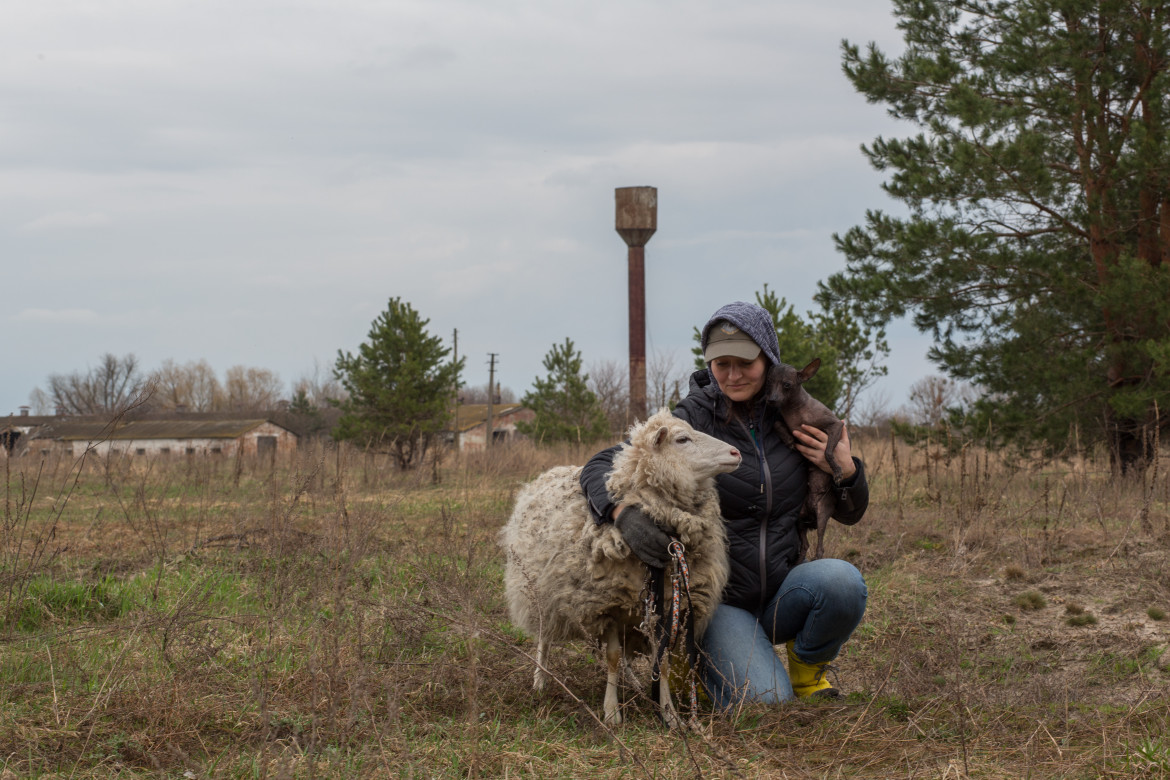Reportage
Behind enemy lines: Life under Russian occupation
‘When I resigned myself to the fact that they might rape me and kill me and my animals, at that moment I was no longer afraid. Instead, I learned to enjoy the small joys, the solidarity that had arisen among the few of us who had stayed in the village.’

Janyie starts the engine, the jeep gives a roar and off we go. He bought the car in Poland and is using it for a few days before handing it over to someone who will take it to the Donbass. Since the beginning of the war, he has been part of a network of volunteers that continually sends jeeps to the front. “They don’t last more than a week,” he tells us.
We leave Kyiv and pass through the barricades closest to the capital. Then we see the traces of artillery, very close to the entrance to the city. In the woods, some trees have been sheared by mortar shells, others are pocked with machine-gun holes. “There, among the plants, there are still hidden mines, and we don’t know where they are because they were buried by neighborhood people and not by the military.”
We pass through Moshchun, the last stronghold before the airport. Not many houses are left standing here, and the few that have held up have broken windows, which are gradually being replaced through aid from humanitarian cooperation. On every street in Moshchun, from the main to the side streets, there is nothing that doesn’t bear the traces of bullets – miles and miles of bullet holes everywhere.
Then we pass through Borodyanka, and Janyie cries out in amazement at seeing the destroyed buildings. We have all seen their image everywhere before, but now we’re standing face-to-face with them. They’re no longer anonymous rubble – they are a monument to a hard, bitter, Ukrainian victory. The remains of the buildings are made even more striking by a Banksy graffiti piece, now covered by glass.
We take a country road and arrive at a small village where Tanya is waiting for us. She is looking after a one-month-old foal on the ranch where she works. She tells us not to go near it; its mother is jealous. “The Russians occupied this place. During the shelling, a donkey died, perhaps of fear. The dogs ate it, so they survived.”
This is Tanya’s story, which makes us realize that such things are also what war is made of.
“I live somewhere else,” she continues, “this is not my farm. The Russians were here, they let the horses out, which survived and even made foals. The rabbits didn’t fare so well: the Russians ate them, although I tried to stop them.”
Tanya is a woman in her 40s who left the capital long ago to live with animals, and when the war started, she decided to stay to look after them instead of following the column of civilians who left the village during the occupation.
The first time she saw the Russian military, she was taking her neighbors’ phones to charge them, as she had a generator. “A soldier with a big machine gun jumped out of a bush,” she recounts, “shouting, ‘What are you doing here? Can’t you see I’m a Russian soldier?’ I pretended not to know what was going on, but he took me into a truck and searched me. I was scared. Imagine how I felt when he found a lot of phones in my backpack. He snooped through the smartphones, but, luckily, he didn’t see my Telegram account, where I was describing what was going on to a Ukrainian army bot. I wouldn’t be here if he had looked harder.”
Tanya tells us that at that moment she understood that this high-ranking military man now trusted her, so he could protect her. Unlike the others, he didn’t seem aggressive. “Tovarish commander” she called him, and in her perfect Russian she’d ask him if she could go feed the animals. When he granted her permission, which wasn’t always the case, he would radio it to those at the front. She would walk, trying to put her feet exactly where she had stepped the day before so as not to trip over one of the 14 mines that had been laid out near the farm. She would reach the positions from where the Russians were shooting at the Ukrainians, hidden in the trenches. Once there, she was to report to a soldier who would accompany her while she tended to the animals. All the while, bullets would slice through the air and sheet metal and shells would explode nearby.
“When I resigned myself to the fact that they might rape me and kill me and my animals, at that moment I was no longer afraid. Instead, I learned to enjoy the small joys, the solidarity that had arisen among the few of us who had stayed in the village. At the end of it all, I had only lost a donkey and a few rabbits, I was all in one piece and so were my animals. Then I was filled with a strange sense of joy, of gratitude.”
Originally published at https://ilmanifesto.it/la-fattoria-di-tanya-al-tempo-delloccupazione-russa on 2023-04-12
